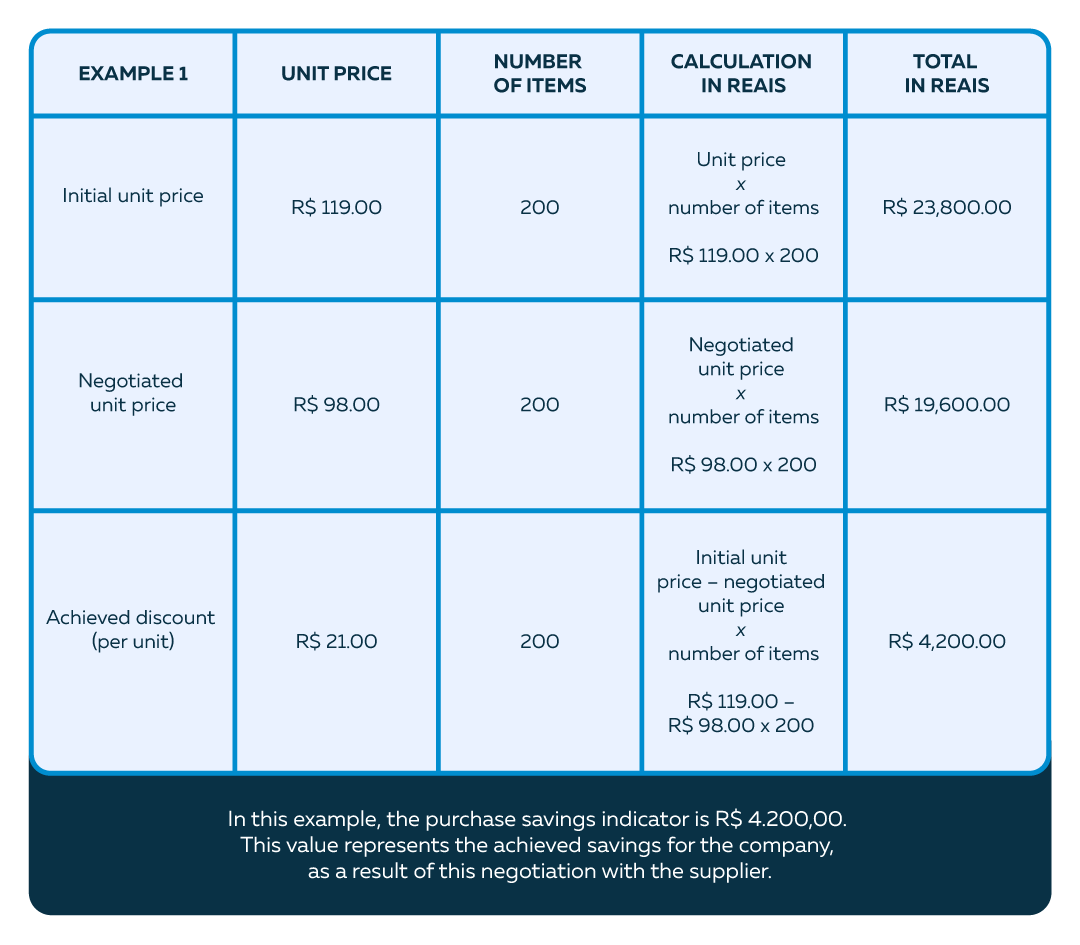
In a procurement context, savings represent an indicator of how much the buyers manage to save by achieving, in a negotiation, a price lower than the baseline (base value of purchasing from a supplier), or a projection of savings in a given period.
Savings is one of the main procurement KPIs. This key performance indicator is important not only in terms of savings generated in a purchase, but also in return on investment (ROI). Actually, this means that the cheapest purchases aren’t always the most beneficial.
The savings strategy is decisive for businesses, because it not only helps to optimize operational costs, but it can also impact sales to the final consumer directly. In this post of ME’s blog, know how to calculate savings and some ways to save even more when purchasing for your company.
Keep on reading to know more!
Step by step procedure about how to calculate savings in procurement
In procurement, R$ 1 saved means R$ 1 profit for the company. The savings indicator is a percentage that shows any expense avoided after a negotiation.
Se below how to calculate savings in a purchase:

Let’s use fictitious values to provide an example of the savings calculation. Here, the purchase request is for 200 new headsets, with a baseline of R$ 119.00.

See now how to calculate the savings percentage for each item and considering also the full value:

In the headset purchase example, the buyer achieved savings of 17.64% per item. Now learn how to calculate the savings percentage of the full purchased value:

As a percentage, the overall savings of the purchase is R$ 17.64% in this example. There are already procurement platforms that calculate savings automatically, such as Mercadoe’s e-Procurement. Such tool shows which negotiation is more beneficial, according to the chosen parameters.
See below 7 ways to achieve more savings on procurement
1. Know the negotiation techniques
The art of negotiating in procurement goes well beyond achieving the best prices. Businesses are looking more and more for strategic partnerships, in order to increase their capacity for innovation and competitiveness. For this reason, buyers must be equipped with information and feel safe before starting any strategic negotiation.
2. Define and monitor procurement KPIs
In the business world, KPIs are indispensable to make decisions based on data, and not just assumptions. Having access to Procurement KPIs, such as lead time, price evolution and productivity (among others), is important for the planning of future purchases – thus increasing the chances to save even more.
3. Stay focused on the spend analysis
Spend analysis has the purpose of helping businesses to identify spend patterns and cost reduction opportunities. It is through spend analysis that buyers can have a clearer and more detailed view of how money is being used in their area. With a better understanding of these factors, procurement decisions can become even smarter.
4. Prioritize product quality
When we talk on how to generate savings – that is, achieve more savings in procurement – the first obvious thing that comes to mind is spending less. However, even if the calculation shows the value saved with that negotiation, other aspects shall be considered, in order to reach certain goals – such as supplier’s reputation and product quality.
5. Make strategic partnerships with suppliers
Having suppliers as partners and building trusted relationships help achieving more savings in negotiations. In such relationship, with the purpose of strengthening the partnership, suppliers usually include very competitive prices in their proposals. Besides the savings factor, strategic partnerships can contribute to decrease the time dedicated to the purchase closure process.
6. Align the procurement team with company goals
Before starting any negotiation with suppliers, buyers must be aware of the area’s key goals. In fact, without a strategic alignment, decisions can be fragile and go against the company’s actual goals. Therefore, having access to tools that allow analysis and comparisons is vital to achieve the expected results.
7. Consider technology as a support
The digitization of procurement processes, through digital platforms – such as Mercadoe’s e-Procurement – frees buyers from their operational routine, so they can dedicate themselves to business goals. By automating processes, the procurement team can direct their focus to what is strategic, such as negotiations with suppliers and bigger savings volume.
Now that you know what savings in procurement are and how to save even more, subscribe to ME’s News, to receive our content in your e-mail.
See you next time! 😉


 Português do Brasil
Português do Brasil Español
Español Português
Português
